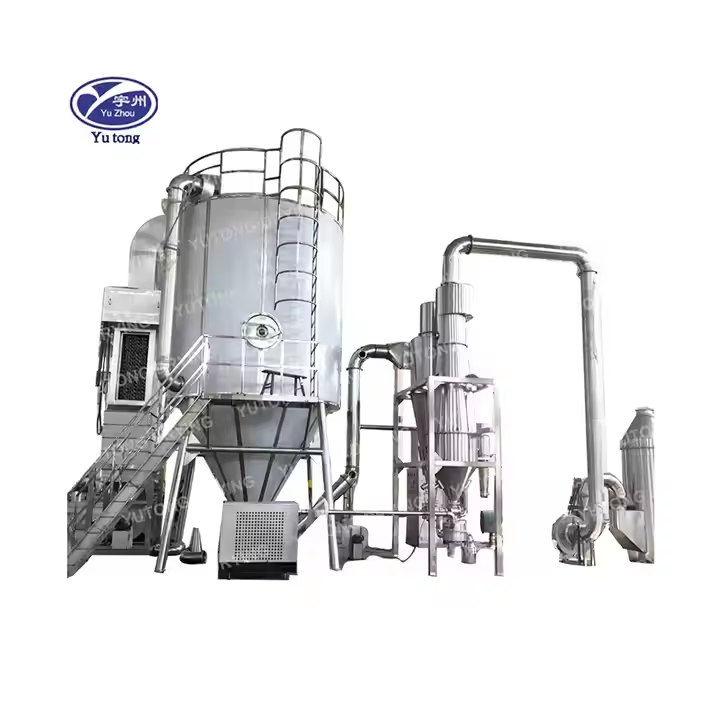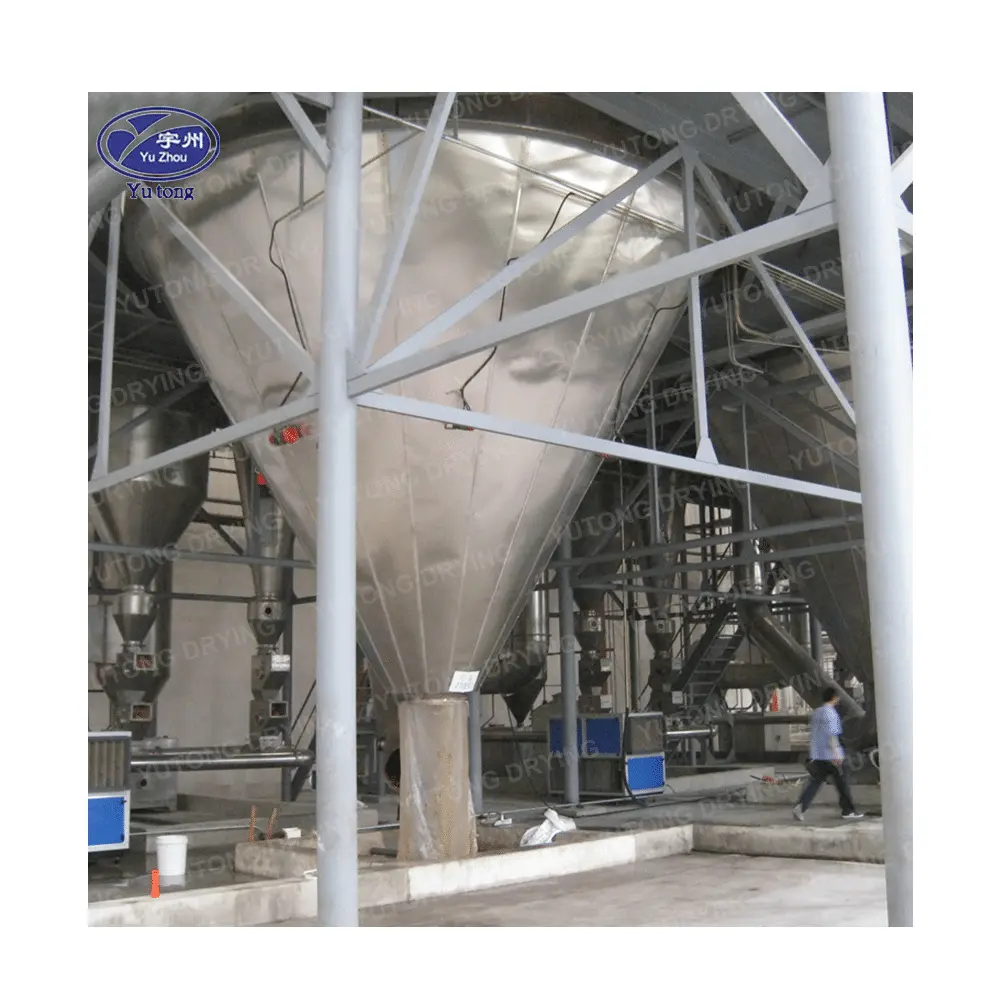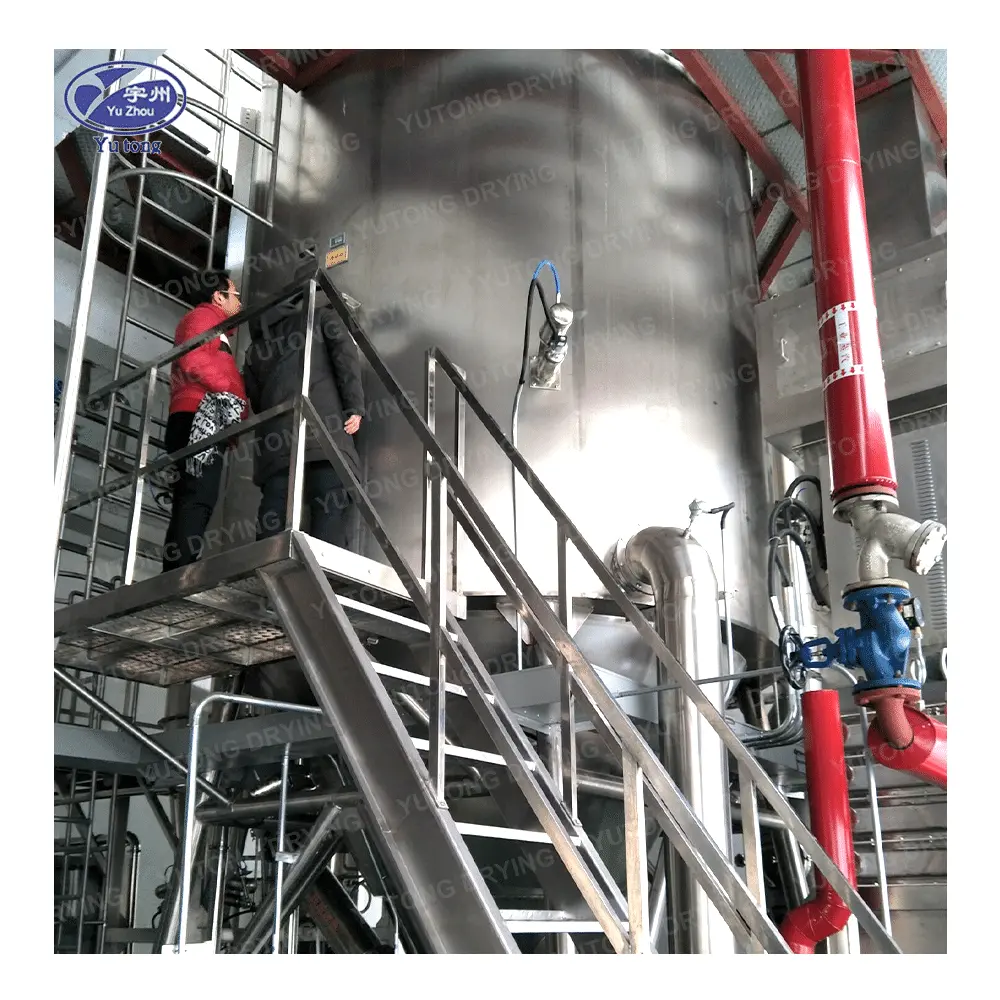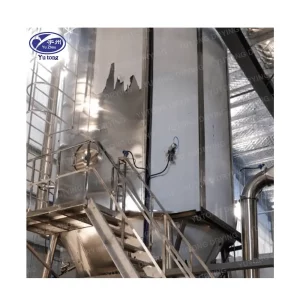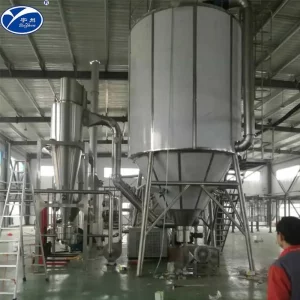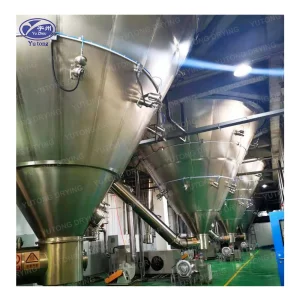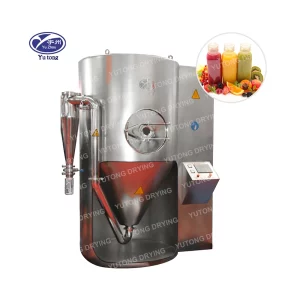Table of Contents
Product Detail
One of the most crucial steps in making instant coffee is the drying process. This is where the magic happens, turning liquid coffee extract into the soluble granules we recognize as instant coffee. One popular method in the industry is spray drying. Let’s delve into the spray dryer coffee process and understand how it transforms your morning brew.
Understanding Spray Drying
Spray drying is a method of producing a dry powder from a liquid by rapidly drying it with a hot gas. This technique is commonly used in the food industry, particularly for creating powdered foods and beverages like instant coffee.
The Science Behind Spray Drying
In simple terms, spray drying involves spraying the liquid coffee extract into a chamber filled with hot air. The heat evaporates the liquid, leaving behind dry coffee particles. These particles are then collected to form instant coffee.
This process is efficient and allows for the production of large quantities of coffee powder quickly. The hot air used in spray drying is usually between 150 °C and 300°C, which ensures that the water in the coffee extract evaporates almost instantly, preserving the coffee’s flavor and aroma.
Moreover, the design of the spray drying chamber is crucial. It ensures that the droplets have enough time in the air to lose their moisture completely. This aspect is vital in ensuring that the coffee’s essence is retained while achieving the desired dryness.
Steps in Spray Drying Coffee
- Preparation of Coffee Extract: The process begins with brewing coffee beans to create a strong coffee extract, which is typically more concentrated than regular coffee. The choice of beans and the brewing method greatly influence the resulting flavor profile of instant coffee.
- Atomization: The liquid coffee is then fed into a spray dryer, where it is atomized into a fine mist of droplets using an atomizer or spray nozzle. The size of these droplets can be controlled to influence the texture and solubility of the final product.
- Drying: The droplets are introduced into a drying chamber filled with hot air. As the droplets come into contact with the hot air, they dry almost instantly, forming fine coffee particles. The speed and temperature of the air can be adjusted to optimize the drying process and ensure quality.
- Collection: The dried coffee particles are collected from the bottom of the drying chamber. They are then cooled and sometimes agglomerated to improve solubility in water. Agglomeration helps create larger particles that dissolve more easily in water, enhancing the consumer experience.
- Packaging: Finally, the instant coffee is packaged and ready for distribution. Packaging plays a critical role in preserving the coffee’s freshness and quality until it reaches the consumer.
Spray Drying vs. Freeze Drying
While spray drying is a popular method, freeze-drying is another technique used to produce instant coffee. Each method has advantages and disadvantages, which impact the flavor, texture, and cost of the final product.
Flavor and Aroma
Spray drying tends to be more cost-effective but can sometimes result in a slight loss of flavor and aroma compared to freeze drying. The high temperatures used in spray drying can lead to some degradation of the coffee’s delicate compounds. However, advancements in technology have helped mitigate these effects, ensuring that spray-dried coffee still offers a pleasant taste.
Despite the challenges, innovations such as controlled temperature management and rapid processing times help retain much of the coffee’s natural aroma. The industry continues to explore new ways to minimize flavor loss during the spray drying process.
Freeze drying, on the other hand, is known for better preserving the coffee’s aroma and flavor. This method involves freezing the coffee extract and then sublimating the ice under low pressure. As a result, freeze-dried coffee often has a more robust taste and aroma.
The lower temperatures used in freeze drying prevent the thermal degradation of aromatic compounds, making it a preferred choice for premium coffee products. However, this method comes at a higher cost, which can affect the product’s market pricing.
Texture and Solubility
Due to its fine particle size, spray-dried coffee is generally more soluble in water, making it quick and easy to prepare. The process can also be adjusted to produce different textures, from fine powders to coarser granules.
This adaptability allows manufacturers to tailor products to consumer preferences, offering a range of instant coffee experiences. Spray-dried coffee’s solubility makes it ideal for busy consumers looking for a quick caffeine fix.
While slightly less soluble, freeze-dried coffee tends to have a more visually appealing texture, the larger granules can give the product a more premium feel, which some consumers prefer.
The distinct texture of freeze-dried coffee is often perceived as a mark of quality, appealing to coffee enthusiasts who prioritize taste and presentation over convenience.
Cost and Efficiency
Spray drying is typically more cost-effective and efficient than freeze drying. It allows for the production of large volumes of instant coffee in a relatively short time, making it an attractive option for manufacturers.
This efficiency translates to lower production costs, enabling companies to offer competitively priced products without compromising on quality. Spray drying’s scalability makes it suitable for meeting high consumer demand.
While freeze-drying offers superior quality in some aspects, it is also a more time-consuming and expensive process. This can lead to higher prices for freeze-dried coffee products.
Despite its higher cost, freeze drying remains a popular choice for specialty coffee brands seeking to deliver the best possible taste experience to their consumers.
The Role of Spray Dryers in Instant Coffee Production
Spray dryers are crucial in the production of instant coffee. Their ability to quickly and efficiently transform liquid coffee extract into a stable, soluble powder makes them indispensable in the industry.
Advantages of Spray Dryers
- Efficiency: Spray dryers can process large quantities of coffee extract quickly, making them ideal for high-volume production.
The rapid processing time allows manufacturers to keep up with the high consumer demand for instant coffee, especially in markets where convenience is highly valued.
- Cost-Effectiveness: The process is generally less expensive than freeze drying, making it a popular choice for many manufacturers.
This cost advantage allows companies to invest in other areas, such as marketing and product development, to enhance their brand’s competitive edge.
- Versatility: Spray drying can produce a range of coffee products with different textures and solubility levels.
This versatility enables manufacturers to cater to diverse consumer preferences, offering a wide array of instant coffee options in the market.
Challenges of Spray Dryers
- Heat Sensitivity: The high temperatures used in spray drying can sometimes cause the final product to lose flavor and aroma.
Addressing this challenge requires careful control of drying conditions and ongoing research to refine the process and minimize flavor loss.
- Particle Size Control: Ensuring consistent particle size can be challenging, requiring precise control over the drying conditions.
Maintaining uniformity in particle size is crucial for achieving consistent solubility and consumer satisfaction across different batches of instant coffee.
Innovations in Spray Drying Technology
Advancements in spray drying technology continue to improve the quality and efficiency of instant coffee production. New techniques and equipment are being developed to preserve the coffee’s flavor and aroma better while enhancing its solubility and texture.
Improved Atomization Techniques
Modern spray dryers use advanced atomization techniques to create more uniform droplet sizes, leading to more consistent drying and better-quality products.
These techniques help achieve a more uniform particle size, which enhances the solubility and consistency of the final product and meets consumer expectations for quality.
Enhanced Control Systems
State-of-the-art control systems allow for precise management of drying conditions, reducing the risk of flavor loss and ensuring a high-quality end product.
Advanced sensors and automation technologies enable real-time monitoring and adjustments during the drying process, ensuring optimal conditions are maintained throughout.
Energy Efficiency
Newer spray dryers are designed to be more energy-efficient, reducing the environmental impact of instant coffee production and lowering operational costs.
The focus on energy efficiency benefits the environment and helps manufacturers reduce costs, which can be passed on to consumers in the form of more affordable products.
Conclusion
The spray dryer coffee process is a critical component of instant coffee production, offering a cost-effective and efficient way to produce high-quality coffee powder. While there are challenges associated with this method, ongoing innovations in technology continue to enhance the quality and sustainability of spray-dried coffee.
Whether you’re a coffee enthusiast or a manufacturer, understanding the intricacies of the spray-drying process can help you appreciate the craft behind every cup of instant coffee. As technology advances, we can look forward to even better-tasting and more sustainable instant coffee products in the future.
The continued evolution of spray drying technology promises exciting possibilities for the instant coffee industry, paving the way for new flavors, improved quality, and greater sustainability in the years to come.
Specifications
|
spec
|
ZPG-25
|
ZPG-50
|
ZPG-80
|
ZPG-100
|
ZPG-150
|
ZPG-200
|
ZPG-300
|
|
|
evaporation capacity(kg/h)
|
25
|
50
|
80
|
100
|
150
|
200
|
300
|
|
|
process amount of material liquid(kg/h)
|
25-34
|
50-68
|
80-108
|
100-135
|
150-203
|
200-270
|
300-406
|
|
|
output of finished pcoduct(kg/h)
|
4.8-7.2
|
9.2-14
|
14.8-22.4
|
18.4-28
|
24-42
|
36.8-56.4
|
55-85
|
|
|
solid content of material liquid( %)
|
18-30
|
|||||||
|
moisture content of finished product( %)
|
3-5
|
|||||||
|
electric power(kw)
|
63
|
132
|
153
|
204
|
246
|
330
|
||
|
heat source
|
Steam pius electricity
|
|||||||
|
Collecting method of product and its efficiency
|
Grade one or two or three stage cyclone wet dust remover is greater than or equal to 95%
|
|||||||
|
automatic control meters and instruments
|
indicator of not air and exhaust air temperature
|
|||||||
|
temperature of air inlet(℃)
|
160-220
|
|||||||
|
temperature of air outlet(℃)
|
80-100
|
|||||||
|
L
|
7000
|
8000
|
9800
|
11000
|
12200
|
14100
|
15000
|
|
|
overal dimensions(mm)
|
W
|
4000
|
5000
|
5700
|
6200
|
7000
|
7800
|
9000
|
|
H
|
6200
|
6900
|
8000
|
8900
|
10750
|
11900
|
13000
|
|
Applications
No Content Matching Your Selection Is Found.

